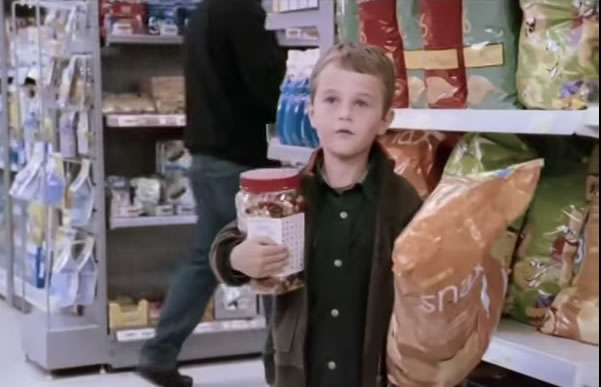When their backs are against the wall, the Food Industry usually pull out one of three soundbites. Each of these soundbites appear sensible on their own, but when you take them as a package, it becomes clear that they are just stonewalling. The response to our piece last week on the New World Little Shop promotion is a good example of this.
New World responded to our blog by saying that Little Shop items are “representative of the everyday products our customers buy… [The post] has primarily pulled out products which we would consider either treats or occasional foods or to be used in small quantities, and we believe are not representative of the overall product selection included in Little Shop.” According to the Dominion Post Foodstuffs also claim that “when New World last had Little Shop items they were used to teach children about healthy eating, maths and other subjects.”
Let’s have a look at the facts. Of the fifty items in the Little Shop, 34 are edible (I wouldn’t grace them with the word ‘food’). Of those, nine are clearly junk food, and another six are pretty borderline nutrition wise and would probably be classed as a “sometimes food”. We have highlighted them on a list below.
If these are considered “occasional treats”, why are only half of them foods fit to be eaten everyday? Is Little Shop supposed to be representative of our diet? If so it is a long way from Ministry of Health recommendations. And why on earth do you need one quarter of their toys to be junk food to learn about healthy eating? That justification is like Sky City using blackjack tables to teach kids how to add, or slot machines to teach kids about the benefits of fruit.
The popular response is that it is up to parents to say no to their kids. Clearly this tactic isn’t effective – why else would food companies invest so much money in pester power? Besides, half of Kiwis are confused about how to eat healthily, so wouldn’t know when to say no. This is the problem with processed fake food – the margins are higher so they can afford to advertise more. That is why you don’t see much broccoli getting advertised – and why the lettuce in Little Shop is a New World brand.
The food industry claim that they self regulate to curb the use of pester power, but then they sneak in tactics like toys by the back door. Then when they are called out on it, they talk about junk food being ‘treats’, the importance of ‘education’, and to stop being a spoil-sport – its all individual choice.
Lets put these three soundbites together into a mock conversation with the food industry. You can pretty quickly see how the arguments get circular.
Why do you target impressionable kids to flog junk food and batter parents with pester power?
Aw come on, they are just a treat. What is wrong with a treat?
Through your advertising you have changed perceptions of what a treat is. It used to be a once a month occurrence, now its daily, which is why convenient snacks make up a fourth meal per day. That is why we are eating too much, and dying as a result.
Well, that is a matter for education.
But half of Kiwis are confused about what to eat. Isn’t that the result of your misleading labeling and advertising to kids?
Stop being such a spoil sport. Our advertising is fun, and makes people happy. It’s all about individual choice.
If it is about individual choice, why are you targeting impressionable kids to flog junk food and batter parents with pester power?
Aw come on, they are just a treat. What is wrong with a treat?
And so on…
Here is a great video on brand loyalty, pester power and children.
Here are Little Shop toys, with the junk and questionable foods bolded:
Food
Snackers apples
Twinings tea
Nescafe coffee
Pams jam strawberry (66.1% sugar)
Watties peaches
Woodland eggs
Romanos BBQ pizza
Anchor milk
Pump water
Keri Orange Juice (has ¾ of the sugar of Coke)
Sealord tuna
Mainland cheese
Chicago Meatlovers Pizza
Tegel chicken
Uno yoghurt (10% sugar)
Tip Top jelly tips
Flora spread
McCain Super fries
Watties baked beans (a 420g can contains 7 teaspoons of sugar)
Pams lettuce
Maxwells pastry
Maxx Chips
Tasti Apricot Snack Logs (39.9% sugar)
Continental cup-a soup
Pams flour
Molenberg bread
Alfa one oil
Dole pineapple
Diamond Rice risotto
Griffins Hundreds and Thousands biscuits
Perlas potatoes
Dole bananas
M&M’s sweets
Weet Bix Bites (22% sugar)
Non Food:
Energiser batteries
Mascara
Flybuys
Finish dishwasher tablets
Nivea moisturiser
Beneful dog food
NZ Cookbook
Tissues
Huggies nappies
Head & Shoulders shampoo
Schick Hydro 5 Razor
Surf laundry powder
Radox shower gel
Friskies Grillers cat food
Rexona deodorant
Morning Fresh dishwashing liquid

